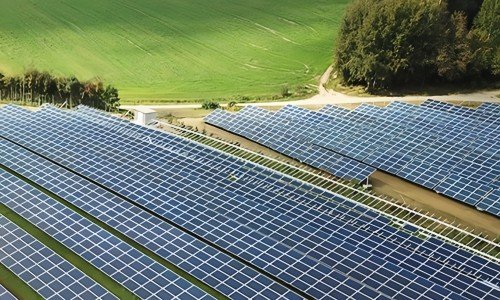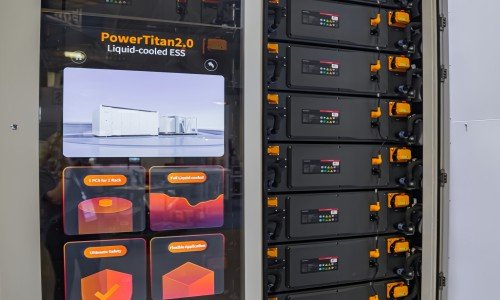
PowerTitan ESS system
Choosing the right inverter for your solar energy system is crucial to maximizing performance, efficiency, and reliability. Sungrow and Huawei are two of the leading names in the inverter market, both offering high-quality products designed for residential, commercial, and industrial applications. But which one should you choose? In this article, we’ll compare Sungrow and Huawei in terms of efficiency, reliability, performance in harsh environments, and key features to help you decide which inverter best meets your needs.
Sungrow and Huawei are both excellent choices, but each brand offers distinct advantages. Let’s dive into their differences.
How Does Sungrow Compare to Huawei in Terms of Efficiency?
Efficiency is one of the most important factors when selecting an inverter. The higher the efficiency, the more solar energy is converted into usable electricity, leading to higher savings on energy bills. Let’s compare the efficiency of Sungrow1 and Huawei2 inverters to determine which one offers better energy conversion.
Efficiency is critical to maximizing the energy production of your solar system. Here’s how Sungrow and Huawei stack up.
Sungrow vs Huawei: Efficiency Comparison
| Inverter Model | Sungrow SG5K-S | Huawei SUN2000-5KTL-L1 |
|---|---|---|
| Efficiency | 98.0% | 98.6% |
| Max Output Power | 5kW | 5kW |
| MPPT (Maximum Power Point Tracking) | Dual MPPT | Dual MPPT |
| Operating Temperature Range | -25°C to +60°C | -25°C to +60°C |
| Maximum Input Voltage | 600V | 600V |
-
Efficiency:
- Sungrow: Sungrow inverters offer an efficiency of up to 98.0%, which is highly competitive and suitable for most residential and small commercial installations. However, it’s slightly lower than Huawei’s efficiency.
- Huawei: Huawei inverters boast an impressive efficiency of 98.6%, making them one of the most efficient inverters on the market. This means more energy from your solar panels is converted into usable electricity, potentially saving more money in the long run.
-
MPPT:
- Both Sungrow and Huawei offer dual MPPT, allowing each string of solar panels to operate at its optimal power point. This feature maximizes the energy harvested, especially in installations with partial shading or varied panel orientations.
Conclusion: Huawei offers slightly higher efficiency (98.6% vs 98.0%), making it the better choice if maximizing energy conversion is your primary concern. However, Sungrow still offers excellent efficiency, suitable for most applications.
Which Offers Better Reliability and Longevity: Sungrow or Huawei?
Reliability and longevity are crucial when investing in a solar energy system. You want an inverter that will continue to operate effectively for many years without major issues or repairs. Both brands use advanced technologies, including integrated cooling systems3, to enhance durability. Additionally, they focus on improving their Mean Time to Failure (MTTF)4, a critical factor for long-term performance.
Let’s compare the reliability and longevity of Sungrow and Huawei inverters to determine which brand will serve you best over time.
Sungrow vs Huawei: Reliability and Longevity Comparison
| Inverter Model | Sungrow SG5K-S | Huawei SUN2000-5KTL-L1 |
|---|---|---|
| Warranty | 5–10 years | 5–10 years |
| MTTF (Mean Time to Failure) | 30+ years | 30+ years |
| IP Rating | IP65 | IP65 |
| Cooling System | Integrated cooling system | Smart cooling system |
-
Warranty:
- Both inverters offer warranties ranging from 5 to 10 years, depending on the model and region. The warranty period reflects the manufacturers’ confidence in the longevity and reliability of their products.
-
Reliability:
- Sungrow: Sungrow inverters are highly regarded for their reliability. They have been used in numerous large-scale solar projects and have a reputation for delivering consistent performance over many years.
- Huawei: Huawei is also known for building extremely reliable inverters. The brand is backed by years of experience in the energy sector and is known for its robust engineering. These inverters have a long operational lifespan, especially in commercial installations.
-
Cooling System:
- Sungrow: Sungrow inverters come with an integrated cooling system that prevents overheating, ensuring stable operation even during high-output periods.
- Huawei: Huawei’s smart cooling system actively adjusts to the temperature, ensuring the inverter maintains optimal performance and extends its lifespan.
Conclusion: Both Sungrow and Huawei offer reliable inverters with long lifespans and competitive warranties. Huawei’s smart cooling system may offer better thermal management, but Sungrow also performs excellently in reliability and longevity.
How Do Sungrow and Huawei Inverters Perform in Harsh Environments?
Inverter performance in harsh environments, such as high temperatures, humidity, or extreme weather, is a crucial consideration for long-term system operation. Both brands feature IP65-rated protection, ensuring durability in dusty or wet conditions, and integrate advanced cooling systems for optimal operation under heat stress.
Solar inverters need to withstand a variety of harsh conditions. Let’s see how Sungrow and Huawei perform in extreme environments.

Huawei inverter installation
Sungrow vs Huawei: Performance in Harsh Environments
-
Temperature Resistance:
- Sungrow: Sungrow inverters are designed to operate in a wide range of temperatures from -25°C to +60°C. They come with an IP65 rating, which ensures that they are protected from dust and water, making them suitable for outdoor installations in tough climates.
- Huawei: Huawei inverters also have an IP65 rating and are designed to operate within the same temperature range of -25°C to +60°C. Huawei’s smart cooling system5 further enhances their ability to perform in high temperatures.
-
Humidity and Dust Resistance:
- Both Sungrow and Huawei inverters are rated IP65, meaning they are highly resistant to both dust and water ingress. This makes them well-suited for installation in outdoor environments, including coastal or dusty regions.
-
Durability in Extreme Conditions:
- Sungrow: Sungrow inverters have proven performance in both residential and commercial settings, even in areas with high temperatures or humidity. The integrated cooling system helps prevent overheating, contributing to long-term reliability.
- Huawei: Huawei inverters are known for their robust design and smart cooling technology, which enables them to function effectively in extremely hot or cold environments, maintaining high performance in a variety of conditions.
Conclusion: Both Sungrow and Huawei perform excellently in harsh environments, with IP65 ratings and temperature resistance from -25°C to +60°C. Huawei’s smart cooling system might offer an edge in extremely hot climates, but Sungrow is equally reliable in tough conditions.
What Key Features Should You Consider When Choosing Between Sungrow and Huawei?
When deciding between Sungrow and Huawei inverters, it’s important to consider the key features that align with your specific needs, including efficiency, monitoring capabilities, ease of installation, and scalability.
Here are the key features to prioritize when selecting between Sungrow and Huawei.
Key Features of Sungrow and Huawei
| Feature | Sungrow SG5K-S | Huawei SUN2000-5KTL-L1 |
|---|---|---|
| Efficiency | 98.0% | 98.6% |
| MPPT | Dual MPPT | Dual MPPT |
| Cooling System | Integrated cooling system | Smart cooling system |
| Monitoring | Real-time monitoring6 via mobile app/web | FusionSolar smart monitoring platform |
| Warranty | 5–10 years | 5–10 years |
| IP Rating | IP65 | IP65 |
-
Efficiency:
- Sungrow: Sungrow inverters offer good efficiency at 98.0%, making them an excellent choice for most residential and small commercial solar systems.
- Huawei: Huawei inverters provide higher efficiency (98.6%), meaning they can maximize energy production from your solar panels and result in more savings.
-
Cooling:
- Sungrow: Sungrow inverters have integrated cooling systems, which keep them running smoothly, especially in hotter climates.
- Huawei: Huawei offers smart cooling technology that adjusts dynamically to temperature changes, providing better thermal management and potentially extending the inverter’s lifespan.
-
Monitoring:
- Sungrow: Sungrow offers real-time monitoring via a mobile app or web portal, allowing users to easily track system performance.
- Huawei: Huawei’s FusionSolar platform offers smart monitoring with advanced diagnostics and AI-powered optimization, making it ideal for large-scale commercial installations.
Conclusion: Huawei offers higher efficiency, a more advanced cooling system, and smarter monitoring, making it a great choice for users who need higher performance and advanced features. Sungrow offers excellent value with solid efficiency and an integrated cooling system, making it a cost-effective choice for most residential and small commercial users.
Conclusion
Both Sungrow and Huawei offer excellent inverters with high efficiency, reliability, and performance in tough conditions. Huawei stands out in terms of efficiency, advanced cooling technology, and smart monitoring, making it ideal for users who want the latest features and maximum energy conversion. Sungrow, on the other hand, provides great value for money and performs reliably in most environments, making it a solid choice for cost-conscious buyers.
Ultimately, your choice will depend on your specific needs—whether you prioritize efficiency, advanced features, or cost-effectiveness. Both brands are excellent, so you can’t go wrong with either, but Huawei might be the better option for those who need cutting-edge technology and higher performance.
-
Discover which inverter brand offers better energy conversion, helping you make an informed decision. ↩
-
Learn how inverter efficiency impacts overall solar system performance and energy savings. ↩
-
Learn how integrated cooling systems improve inverter reliability and durability. ↩
-
Understand how Mean Time to Failure (MTTF) impacts inverter lifespan and reliability. ↩
-
Understand how smart cooling enhances inverter performance in high-temperature conditions. ↩
-
Learn how monitoring platforms can optimize energy production and system efficiency. ↩





